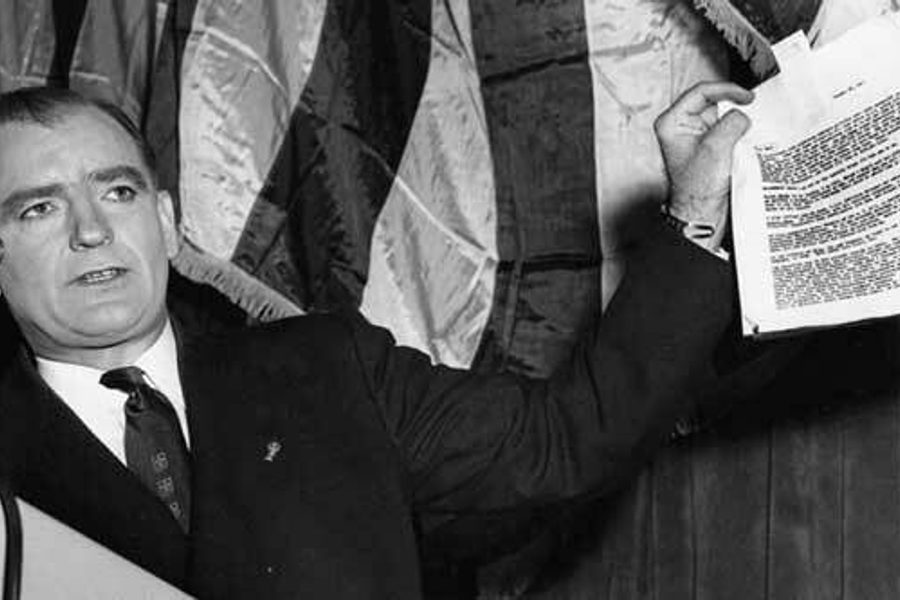In Vermont, Shades of McCarthy
The state’s Republican candidate for governor waves a bogus list—but this time the enemies are prisoners, not communists.
Terry J. Allen

At a September 23 debate, Republican candidate for Vermont governor Brian Dubie waved a sheaf of 8.5 x 11 printouts in the air. He announced he was holding a “list” of inmates “who need to be incarcerated,” and said his Democratic rival Peter Shumlin’s proposed corrections reform plan would free the criminals. Fanning the papers, Dubie charged:
“These are the 780 individuals that are on that list. On this list there are people that deal with pornography with children. There are drug dealers. There’s a comprehensive list of who these people are. That’s what my ad says. That’s what the list is.” Watch the video:
Sixty years earlier, another man waved papers, declaring: “I have here in my hand a list of 205 – a list of names that were made known to the Secretary of State as being members of the Communist Party and who are still working and shaping policy in the State Department.”
Sen. Joseph McCarthy never made his list public, but repeatedly insisted it was real, and named card-carrying communists who threatened America’s security. History guesses, but cannot prove, that McCarthy’s list never existed.
But soon after Dubie’s list maneuver, it emerged that the papers he brandished were not what the candidate claimed. The document did not contain 780 inmate names. It was not a list. It was simply a printout explaining state statutes.
The race to replace Vermont’s retiring moderate Republican governor is tight and the sides well drawn. Dubie, the current lieutenant governor, is a conservative in the pre-Tea Party Republican mold. He calls for lower taxes, less regulation and more business-friendly policies. In socially moderate Vermont, he has steered questions away from his anti-gay marriage stance.
Shumlin, the former state Senate pro-tem, is an acerbic and witty liberal with a reputation for playing hard-ball politics. He has promised to close down the state’s leaky nuclear power plant, promote green energy, and implement single payer healthcare in Vermont – no matter what the feds do. And he has called for decriminalizing small amounts of marijuana and for reforming the corrections system on which the state spends more than it does on education. He advocates transitioning nonviolent offenders back into society through housing and training programs, given that some were “locked up for nothing more than writing bad checks or having nowhere else to go.”
In an ad campaign some have likened to the Willie Horton scare tactics, Dubie seized on the corrections issue, charging that Shumlin’s plan would “turn drug dealers and child pornographers out on the street… back in our neighborhoods.”
The tactic and level of rancor in this campaign may be unprecedented in this rural state, where not so long ago a gubernatorial candidate lost points with voters when he was unable to answer the question: How many teats on a cow?
Some see the sniping as “not the Vermont way” and point to Dubie’s hiring of outside guns including campaign manager Corrie Bliss, who headed the failed re-election bid of Virginia U.S. Representative Thelma Drake, a full-bore Republican conservative. But Dubie’s use of the list and its McCarthyite resonance may be drawing a backlash. Some say usually bland Vermont politics have turned into a marriage of Horton and McCarthy.
The nonexistent 780-name list of threatening criminals is an ironic twist on Vermont’s key role in bringing down Sen. McCarthy. In 1954, four years after McCarthy waved his list of communists, Vermont Republican Sen. Ralph Edward Flanders condemned his Wisconsin colleague, who caused innocent people to be blacklisted and ruined lives. Flanders introduced a motion to censure McCarthy that inspired a cowed Senate to start to break McCarthyism’s spell.









